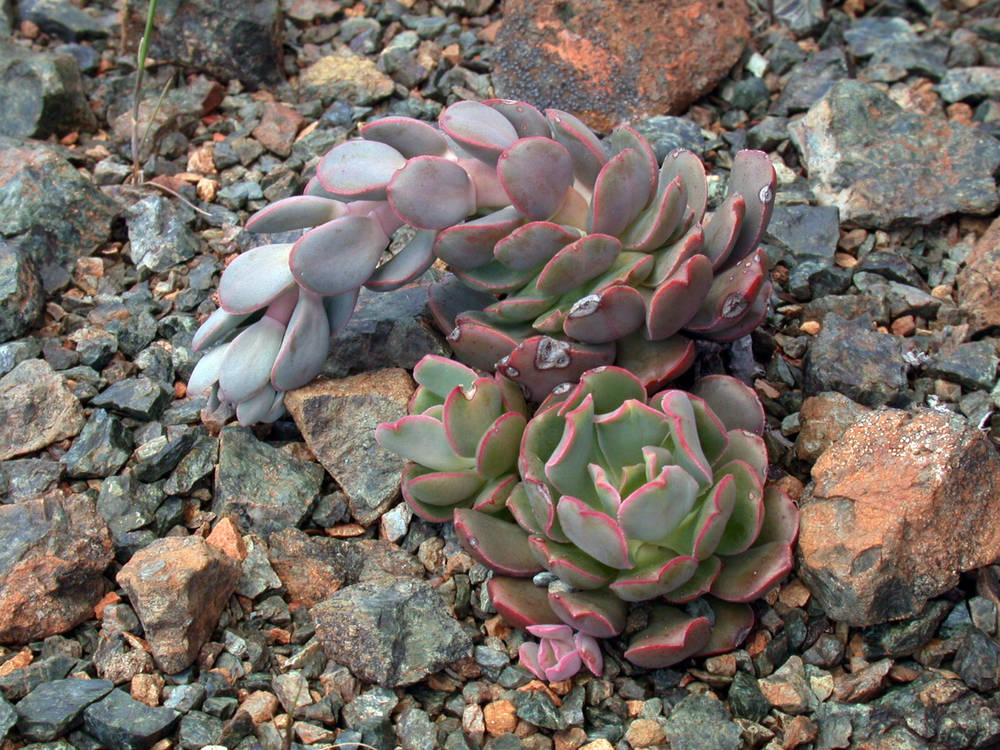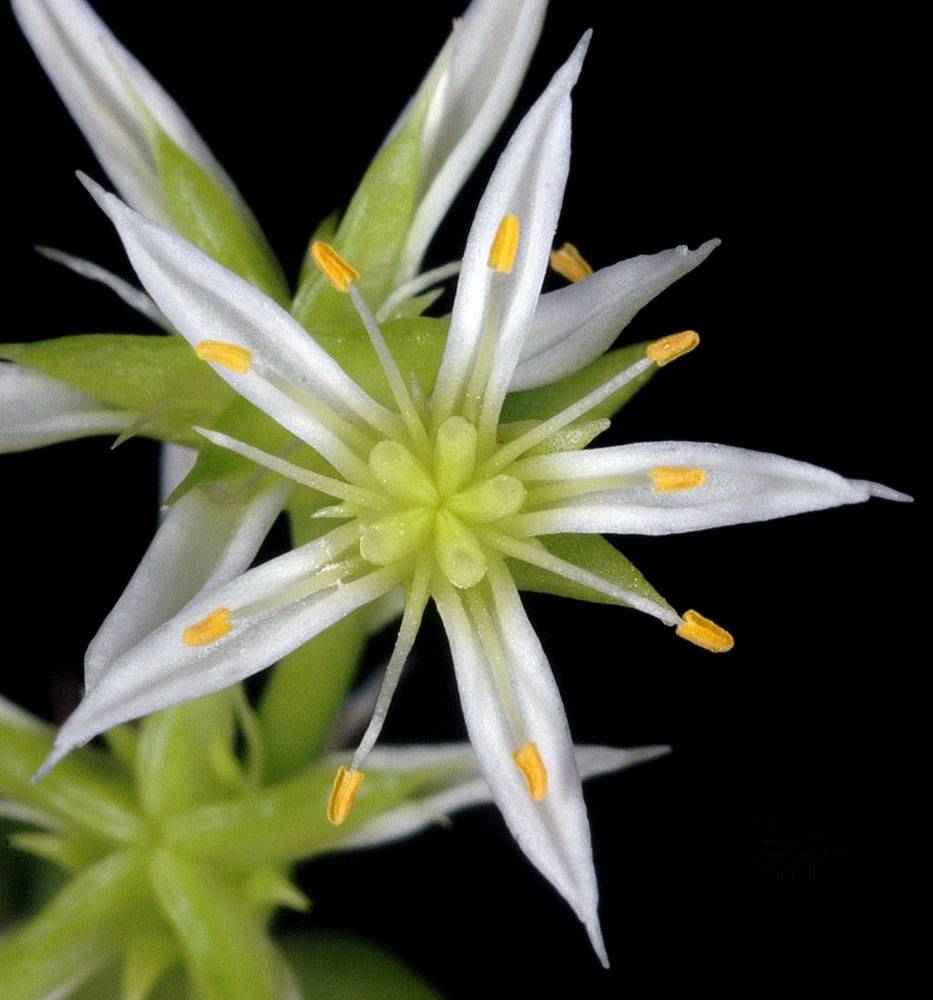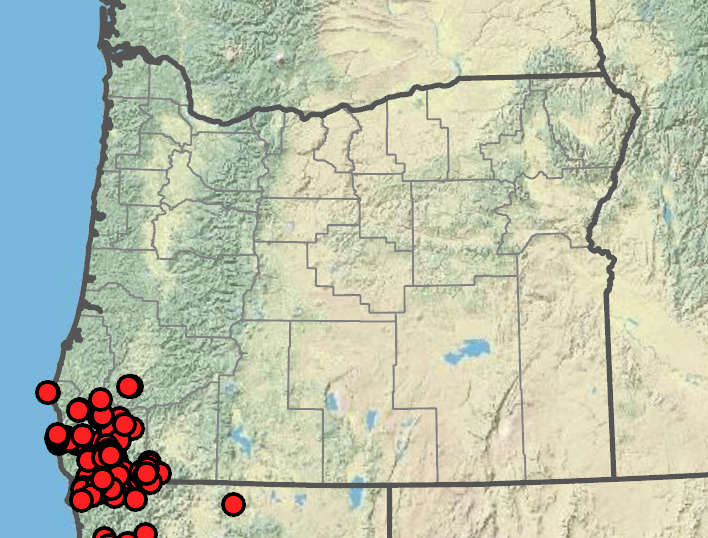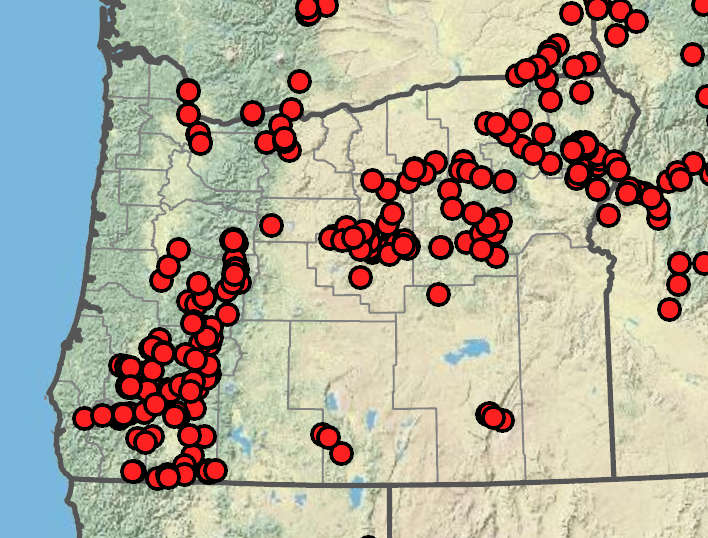Sedum laxum
Sedum stenopetalum
roseflower stonecrop
wormleaf stonecrop
ascending; much branched, bearing dense rosettes.
decumbent, branched, with terminal rosettes.
erect or decumbent, 10–42 cm;
stem leaves alternate, oblanceolate, elliptic, oblong or suborbicular; broadest near or above middle, auriculate or not, decurrent or not, different from rosette leaves.
erect, branched, 10–43 cm;
stem leaves alternate, linear, with basal scarious spurs and producing offset rosettes in their axils; bulbils present.
rosette leaves obovate, spatulate or oblanceolate, subterete to somewhat flattened, 10–50 × (4.5)6–33 mm, green, bases not spurred, not scarious;
tips truncate to rounded or obtuse, notched or not;
surfaces glaucous or not, not pruinose.
rosette leaves persistent, spreading to erect, narrowly oblanceolate; narrow and often rounded in cross section, 4.3–13.8 × 1.4–2.7 mm, green to red, bases with small spur;
margins sometimes papillose-ciliate; papillae 0.1–0.15 mm;
tips acuminate or attenuate;
surfaces not glaucous, dried leaves strongly keeled.
panicle-like cymes with 12–80 flowers, with 3+ branches;
branches 2-forked;
bracts similar to stem leaves but smaller.
solitary flowers or small cymes with 9–15(25) flowers, mostly 3-branched;
primary branches sometimes dichotomously forked;
bracts like other leaves but smaller.
5-parted;
calyx lobes erect, closely appressed to corolla tube; ovate or lanceolate; (2)2.6–5.1 mm, pale green;
tips acute or subacute;
petals erect or spreading 15–30° from flower axis, 4–11 mm, pink with broad white margins, sometimes almost entirely white; aging red;
tips acuminate, sometimes attenuate;
anthers dark rose red, rarely dark red-orange; aging black.
(3)5(8)-parted;
sepals distinct, lanceolate to ovate, 2–3.7 × 0.8–1.7 mm, yellow, yellow-green; greenish, white, or cream-colored;
tips acute or acuminate;
petals spreading horizontally; distinct, lanceolate to elliptic; widest at or below middle, 5.4–11 mm, yellow or white with green or brown;
keel white;
tips obtuse to long-acuminate, sometimes apiculate;
filaments yellow or white;
anthers yellow;
ovaries glandular-pustulose.
erect, brown.
widely spreading when mature, fused near base, light green to brown, papillose, rarely glandular-pustulose.
=64.
Sedum laxum
Sedum stenopetalum
Western North America. 4 subspecies; 2 subspecies treated in Flora.
Sedum laxum is recognized by its long, narrowly acute to acuminate, usually pink petals. The white petal margins can be broad, and, depending on environmental conditions, the entire petal may be white. Even when petals are white, anthers remain dark red, rarely dark red-orange.
Western North America. 2 subspecies.
Sedum stenopetalum is easily identified by its linear leaves, and by the small rosettes in the axils of all or most of the leaves on the flowering stems. These rosettes may bear more or less deformed, petal-less, terminal flowers. Because plants usually grow from overwintering rosettes that are independent of the parent plant, they usually appear biennial but can be considered clones of long-lived perennials. Plants with a single, terminal flower (sometimes replaced by a rosette), have been segregated as S. stenopetalum ssp./var. monanthum. The range of this putative taxon is completely overlapped by the typical form, and the two are sometimes found in a single population.
Barbara Wilson, Richard Brainerd, Nick Otting
Barbara Wilson, Richard Brainerd, Nick Otting
- Local floras:
BC,
CA,
OR,
WA
- Local Web sites:
CalFlora,
CalPhotos,
Flora NW,
PNW Herbaria,
Turner Photog.
WildflowerSearch
iNaturalist (observations)
USDA Plants Database
- LBJ Wildflower Center
- SEINet
- Plants of the World Online
- Encyclopedia of Life
- Wikipedia
- Google Image Search





